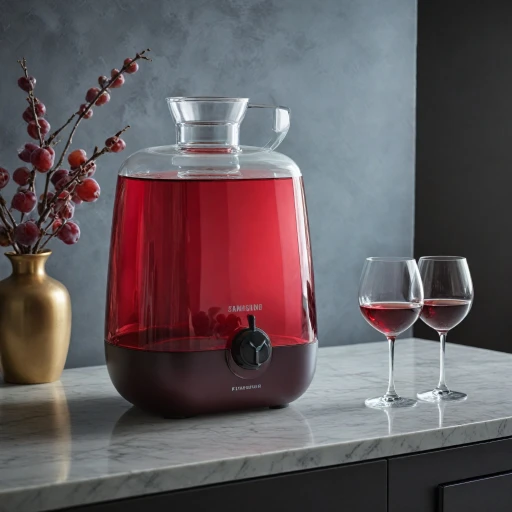
Understanding Sweet Wines
Sweet Wines: A World of Flavors
Sweet wines offer a delightful palette of flavors and aromas that are crafted to please the senses. From the famous Moscato to prestigious Port wines, these beverages vary significantly in style, taste, and origin. Understanding the composition and unique characteristics of sweet wines can enhance your enjoyment and appreciation of this rich category.
Sweetness in wines primarily results from residual sugar left after the fermentation process. As a result, these wines boast a range of flavors, from the floral notes of Moscato Asti to the rich, intense taste of Del Poggio Port. Depending on the winemaking techniques, the sweetness level can be adjusted, offering choices from slightly sweet Jacob's Creek wines to ultra-sweet Chenin Blanc varieties.
Among sweet wines, the refreshing taste of Moscato, characterized by its fruity and floral notes, has become many people's favorites. The popularity of pink and red Moscato has steadily climbed, driven by these wines' ability to pair beautifully with diverse cuisines. As we dive into various popular varieties and explore the best pairings and storing options, understanding the primary flavors will set a strong foundation for your journey. Explore further about the complexities of roses here.
Whether you're exploring the options at sale prices or selecting a bottle from Cupcake Vineyards or Stella Rosa, understanding these wines' inherent sweetness and tasting notes can significantly enhance your experience. Take the journey through the intriguing world of desserts wines and discover a spectrum that extends from crisp whites to the bold depths of sweet red wines.
Popular Varieties of Sweet Wines
Discovering the Varieties: Embrace the Sweetness
Sweet wines, a beloved category for many, offer a range of indulgent flavors and aromas that intrigue and delight the senses. From the delicate bubbles of Moscato d’Asti to the robust richness of Port, sweet wines span a remarkable spectrum of tastes that can cater to any wine lover's preference.
Among the popular varieties, Moscato has gained a significant following, with types such as pink Moscato and Moscato d'Asti becoming crowd favorites. Their sweet, fruity notes often come with a light body and lower alcohol content, making them perfect for casual sipping. These wines are frequently found at great sale prices, making them an accessible treat for any occasion.
For those who enjoy a more intense experience, Port wine is an excellent choice. Known for its deep red color and bold sweetness, Port is often enjoyed as a dessert wine. It boasts a rich and complex profile, characterized by notes of dark fruit and spice, which pair well with chocolate desserts or a flavorful cheese platter.
Riesling wines offer a different kind of sweetness, often with a balanced acidity that complements dishes ranging from spicy Asian cuisine to fresh seafood. This white wine variety from regions like Germany and Alsace is appreciated for its refined bouquet of fruit and floral notes.
An option like Chenin Blanc provides versatility, with wines available in diverse styles, from bone dry to lusciously sweet. When craving a sophisticated sweet wine, a premium brand like Castello del Poggio or Stella Rosa might be ideal, both providing a taste of luxury and indulgent flavors.
Still pondering which sweet variety might be the best fit for your palate or event? Consider what suits your collection and aligns with your taste preferences. Understanding the nuances of each variety can enhance your wine experience, allowing you to appreciate each glass to its fullest potential.
Pairing Sweet Wines with Food
Perfect Pairings for Sweet Wines
Exploring the vibrant world of sweet wines naturally brings us to the delightful task of pairing them with foods that enhance their irresistible flavors and aromas. Whether you're savoring the fresh, fruity notes of a moscato or indulging in the robust richness of a port, understanding the art of pairing can elevate both your dining and wine-tasting experiences. Sweet wines such as moscato, with their ripe fruit notes and honeyed sweetness, pair wonderfully with spicy dishes. Think of Thai or Indian cuisine where the sweetness in the wine can temper the heat, creating a balanced harmony on your palate. Similarly, moscato wine, especially the beloved pink moscato, makes an excellent companion to lighter fare such as salads with fruit accents. When it comes to dessert, a red moscato or the luscious flavors of a riesling shines. Delight in a glass alongside a creamy cheesecake or berry tart, where the wine's sweetness is mirrored and balanced by the dessert's textures and flavors. Port, with its more intense sweetness and full-bodied taste, pairs impeccably with salty cheeses, making for a luxurious and indulgent after-dinner treat. For those who enjoy white wines, a chenin blanc, with its varying levels of residual sugar, can easily complement dishes ranging from fresh seafood to spicy chicken. Its versatility lies in its ability to enhance both sweet and mildly tangy flavors. While pairing is a delightful exploration, the temperature at which these sweet wines are stored also plays a crucial role in maximizing enjoyment. For more on the storage of your favorite sweet wines to preserve their aromatic and flavor profiles, you may find this guide on thermoelectric wine coolers enlightening. Overall, the choice of foods to pair with sweet wines is vast, and ultimately, personal preference and experimentation will lead to discovering your own favorites. So next time you're uncorking a bottle from mason vine or a stella rosa selection, consider the culinary possibilities that await you.Storing Sweet Wines in Wine Coolers
Ensuring Proper Storage for Sweet Wines
When it comes to preserving the delightful flavors and distinct sweetness of your favorite sweet wines like Moscato, Riesling, or Port, proper storage is key. Wine coolers are essential for maintaining the quality and taste of wines over time. Here's why storing sweet wines in wine coolers makes a difference:- Temperature Control: Sweet wines require consistent temperatures to prevent spoilage and maintain their sweetness and aromatic notes. Wine coolers provide a controlled environment that ensures your wines are stored at the optimal temperature, usually between 45 to 65°F, ideal for both red and white varieties.
- Preserving Sweetness: The residual sugar in sweet wines like Moscato Asti and Stella Rosa can be sensitive to temperature fluctuations. Wine coolers help preserve the wine's balance of sweetness and acidity, keeping the wine's fruit-forward flavors intact.
- Humidity Levels: Proper humidity levels are vital to keep the cork from drying out, which could lead to oxidation and spoilage. Wine coolers help maintain a stable humidity environment, ensuring that wine corks remain intact and airtight, protecting your best sweet wines.
- Aging Potential: Some sweet wines, such as dessert wines, benefit from aging. A reliable wine cooler can enhance the wine's complexity and sweetness over time without the risk of losing its unique tasting notes.
Tasting Sweet Wines Like a Pro
Mastering the Sweet Wine Tasting Experience
To truly appreciate sweet wines like moscato, port, and riesling, developing a keen palate is essential. Sweet wines, with their delightful range of flavors and aromas, offer a multisensory experience. Here’s how you can taste them like a pro. First, take a moment to observe the wine’s color. A sweet white wine like moscato or asti might present pale yellow hues, while a red moscato can exhibit deep red shades. This visual inspection not only sets the stage for tasting but offers clues about the wine's body and residual sugar content. Swirl the wine gently in your glass to release its aromas. Lean in to take a deep sniff, allowing the fragrance notes to reach your senses. Sweet wines often exude lively aromas ranging from floral and peachy in a bottle of chenin blanc to honeyed and nutty in port wines. Next, take a small sip, letting the wine spread over your entire palate. Notice the sweetness level balanced by acidity, which is crucial for a wine's overall harmony. You’ll discover varying intensities of sweetness as you explore different varieties. For example, an asti might be effervescent and sweet, matching well with certain desserts. Pay attention to the finish—how long the wine's flavors linger in your mouth. A well-crafted sweet wine from a producer like Castello Del Poggio or Cupcake Vineyards should leave a lasting impression without oversaturating your palate. For those whose favorites include stella rosa or pink moscato, remember that the price doesn’t always equate to quality. Sale offerings might present opportunities to try new sweet wines that could become future favorites. Lastly, engage with the wine beyond taste: consider the story, the winemaking process, and the vineyard’s terroir. This approach doesn't just enhance the tasting experience but deepens your appreciation and understanding of sweet wines. Enjoy the journey as you explore these cherished bottles, each with its distinct sweetness and charm.Choosing the Right Sweet Wine for You
Selecting the Perfect Sweet Wine for Your Taste
Finding the ideal sweet wine to match your palate requires an exploration of different flavors, notes, and varieties. With so many options available, from Moscato to Riesling, and Ports to Chenin Blanc, it's essential to consider your flavor preferences and the occasion for which you're selecting the wine.- Flavor Preferences: If you love fruity notes and want a wine with a pronounced sweetness, a Moscato Asti or a pink Moscato might be perfect for you. These options typically boast luscious fruit flavors with a refreshing quality. On the other hand, those who prefer a balance of sweetness and acidity might enjoy a glass of Stella Rosa or Jacob's Creek.
- The Occasion: Are you looking for something to sip with dessert? Opt for a dessert wine like a white or red Moscato, with higher residual sugar levels, that pairs well with sweet courses. For a versatile choice, a sweet white wine like Chenin Blanc or a bottle from Cupcake Vineyards can fit various settings, from casual gatherings to formal dinners.
- Price and Availability: When considering wine prices, you may find some great sweet wines on sale that offer both quality and budget-friendly options. Look for brands such as Barefoot for affordability or Del Poggio for an intriguing Italian flavor.
- Tasting Experience: Don't hesitate to try new wines to refine your preferences. Engaging in tastings allows you to critique each wine's balance of sweetness, acidity, and fruit flavors. Carefully note what stands out in each and what resonates with your taste buds.












